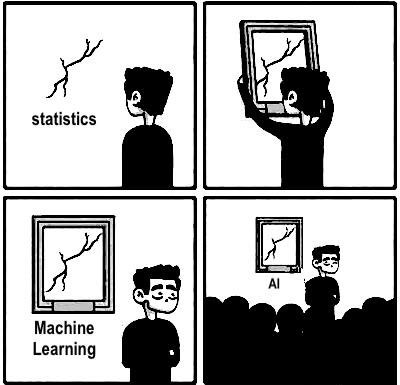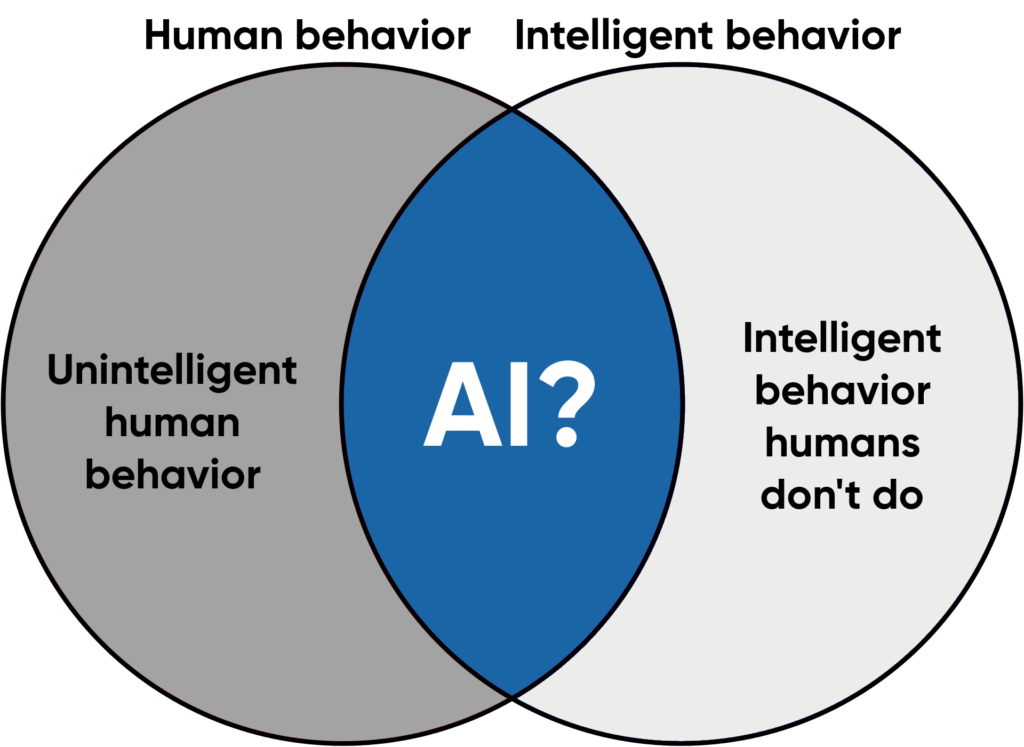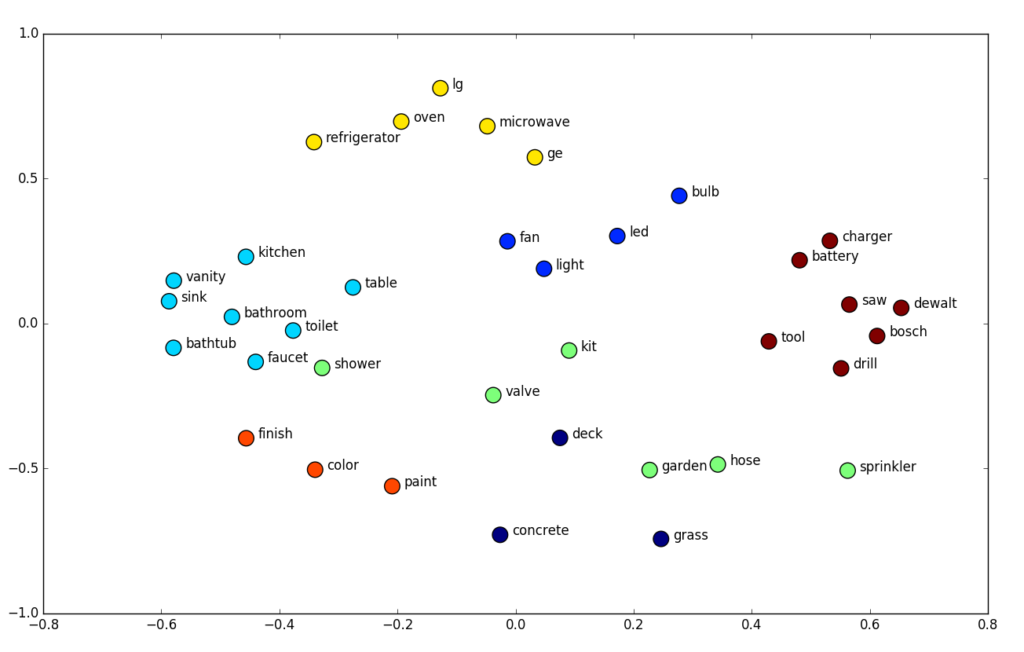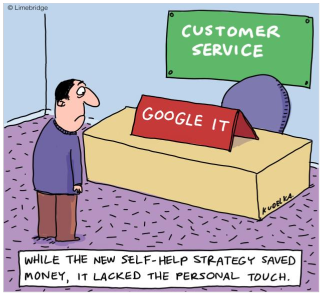Welcome! Our “Unlocking AI potential in e-commerce and online business” series aims to provide basic guidance on applying AI (Artificial Intelligence) in businesses which use the internet as a primary source for delivering value to their customers. In this article, we focus on explaining some terms and buzzwords which are often used in connection with AI. Enjoy your reading!
How can we profit from AI?
This is a question many CEOs and CMOs are asking us. No wonder, according to a recent article published by Google:
- 85% of executives believe AI will allow their companies to obtain or sustain a competitive advantage
- 66% of marketing leaders agree automation and machine learning will enable their team to focus more on strategic marketing activities
How to successfully execute AI-related projects? You can find a few tips in the second article in our “Unlocking AI potential in e-commerce and online business” series!
AI has been around for 60 years and evolved from simple rule-based systems into advanced mathematical models, capable of adapting to changing conditions in a real environment. Powerful hardware in combination with data availability enables machine learning solutions to be developed for almost every e-commerce and online business. Nevertheless, there are several questions each executive should ask before starting an AI-oriented project:
- What exactly does AI mean in the context of our business?
- Which phases will the AI project have and what kind of preparation is needed?
- Should we build an in-house team? What tasks should we outsource?
- How do we measure progress?
- Will the investment into AI pay off?
The answers to these questions leads to a precise plan of how to get value from AI and machine learning; we will help you get them.

Is AI just a fancy name for statistics?
One issue with Artificial Intelligence is that there is no exact definition of what it really stands for. The most common approach is to relate AI to human behavior:
“Artificial Intelligence is the science of making machines do things that would require intelligence if done by men.” (Marvin Minsky, 1967)
But here comes the problem – is human behavior always intelligent? Can we expect “rational” behavior from our customers when developing a predictive machine learning solution? The most important part of each AI project is the initial business analysis which should reveal general aspects of the problem we are trying to solve. We want experiments and simulation to be as realistic as possible, otherwise, we are at risk of developing an inconsistent mathematical model with poor performance in a real environment. The amount of customer irrationality and the level of abstraction of the business case indicates the requirements on the solution.

Based on the complexity, we can split AI projects into four categories:
- Rule-based systems without internal representation of the real world: simple IF-THEN rules; e.g. an e-mailing program which sends messages based on the day of the week and the customer demographic characteristics
- Rule-based systems with internal representation of the real world: similar to the previous one, but enhanced by definition of states and relations between the entities in the environment; e.g. a recommendation engine recommending products to the customer based on his or her recent online journey
- Machine learning systems without continuous learning: a mathematical model is trained on historical or prepared training data; no further learning is done after deployment; e.g. a random forest for churn prediction trained on the historical behavioral data
- Machine learning systems with continuous learning: a mathematical model is updated continuously, using recent or real-time data; e.g. a dynamic customer segmentation used by social media companies
Therefore, as a scientific discipline, AI covers everything from simple decision trees to advanced mathematical models.
Sometimes people ask us “Hey, can we borrow your AI for a while and test it?” – we should point out that AI is much more like an approach to problem-solving instead of one particular computer program or algorithm. From a philosophical point of view, we can define two types of AI:
- Weak AI: a simulation of human decision making process using mathematical models and available data – this basically covers all instances and implementations of AI nowadays
- Strong AI: a machine or algorithm which realizes its own existence, has its own desires and goals and can reproduce itself (make another machine or algorithm with similar properties) – this is the subject of philosophical and scientific debates and the inspiration for Sci-Fi books and movies, nevertheless, we will probably not see anything like this in the near future
How to deal with data selection and knowledge representation in AI projects? You can find a few tips in the third article in our “Unlocking AI potential in e-commerce and online business” series!
How to leverage AI in e-commerce?
There are many drivers of success in e-commerce and internet companies. Based on data sources and the nature of the AI solution we can distinguish two main directions:
- Improvement of customer satisfaction
- Optimization of internal processes
1. Improvement of customer satisfaction
A happier customer leads to bigger profits. Better personalization and customer support leads to a happier customer. AI could be a real game changer in these areas.

The most commonly known type of solution is probably a product recommendation engine which chooses products to show to the customer based on their transaction and browsing history. In some cases, that alone can boost online sales by tens of percent. Besides the product recommendation, almost every piece of online communication, including banners, navigation and messages, could be personalized in real time using the right data.
Advanced algorithms can dynamically define marketing personas or identify the ones you have already created. It is much easier to increase sales when you know which prospects are ready to buy. Customer segmentation is a big deal and can be a basis for the whole marketing strategy.
2. Optimization of internal processes
Another way to leverage AI in e-commerce is to use NLP techniques (Natural Language Processing) for semantic modeling and key-word optimization. This will help you create product tags and categories automatically. Many companies are doing this manually, employing several people to read product descriptions each time a new product comes out. This is not just time consuming, it also results in the creation of lots of synonyms among tags and keywords, which makes further semantic analysis almost impossible and reduces performance of the search engine. With NLP, you can standardize the whole process, save time and money and improve the product search for your customers.

Many E-commerce companies use a BI (Business Intelligence) solution to support their strategic decisions. If you are one of them, it may interest you that more and more manual BI related tasks are being replaced by machine learning driven automation. In fact, it is quite easy to delegate simple BI tasks to AI algorithms so that your experts can focus on the tough ones. Typical areas for this kind of optimization are pricing, buying, logistics and warehousing. You can also use smart algorithms as an alarm system to detect unusual development among your data, either for discovering possible threats or interesting business opportunities.
Should we implement AI in our company?
If you want to benefit from AI, you need a few things; proper understanding of an AI project life cycle, the right data and the right people. We will cover all these aspects in our series “Unlocking AI potential in e-commerce and online business”. Stay tuned!
About the author
My name is Ondřej Kopička and I help companies automate data analysis.
Does the volume of your data exceed the capacity of your analysts? Then we should talk.
Connect with me on LinkedIn: https://www.linkedin.com/in/ondrej-kopicka/





